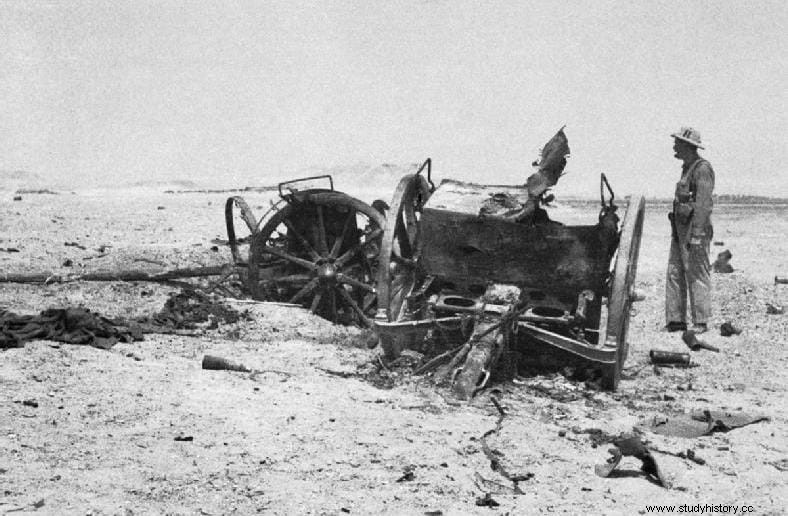One of the lesser-known events of World War II took place in 1941, when the British, Iraqis, Germans and Italians locked in a battle for control of the Mesopotamian country. The campaign, which is known as Operation Sabine o Anglo-Iraqi War, lasted just a month and a half but played a decisive role in the future of the world conflict.
In March 1940, the anti-British Rashid Ali al-Gailani was appointed Prime Minister of Iraq. . The British wanted Iraq to break relations with Germany and Italy, something Gailani flatly refused. On the contrary, making visible his distaste for foreign control of his country, they established contacts with Nazi and Fascist diplomats, and hindered the movement of English troops.
Sanctions and economic reprisals were not long in coming and led to the fall of Gailani, replaced on January 31, 1941 by a more pleasing British prime minister, Nuri al-Said. But Gailani did not stand still and organized a coup d'etat . On April 2 it was carried out and he regained power, although without overthrowing the monarchy.

His first act as the new prime minister was to cancel the Anglo-Iraqi alliance and cut off oil supplies to the British. He also stated that British troops were no longer allowed to pass through Iraq unless those stationed there withdrew.
The British response was to send 9,000 more soldiers, who landed in Basra on April 18. Twelve days later the Iraqis surrounded the British base of Habbaniyah with a force of approximately 6,000 men and 30 artillery pieces. On May 2, the battle for control of that strategic point began.
The British had 18 tanks and 96 planes, most of them training but which were modified in the field to carry bombs. This air superiority tilted the balance in favor of the British, despite the fact that the Iraqi ground forces were better prepared.

For this reason, the Gailani government requested military support from the Axis powers . Hitler, seeing the opportunity to open a new front, approved the request and put General Hans Jeschonnek of the Luftwaffe in charge of the operation, with the title of Fliegerführer Iraq .
Thus, between May 10 and 12, 1941, 12 Heinkel He 111 aircraft and 14 Messerschmitt Bf 110 they came to Mosul to support the Iraqi army. From the air bases of Vicky's France in Syria, 13 Junkers Ju 52 were also sent and Junkers Ju 90 . They were joined by a squadron of fighters from the Regia Aeronautica Italian. All of these aircraft were painted with Iraqi markings. Suddenly Iraq had become a World War II battlefield.
The fact is that with all the superiority of the RAF prevailed. Axis aircraft were far from their supply bases, and the British continued to land troops and tanks, almost a hundred of them, in Basra. By May 27 they were already in Baghdad. Two days later, all Luftwaffe personnel and German diplomats fled the city, along with Gailani and most of his ministers. They did it on the last two planes they had left, two Heinkel He 111 , bound for Berlin.
The armistice was signed and a pro-British government was reinstated. In this way, the expansion of the Third Reich in the Middle East was prevented, and Allied access to Iraqi oil was assured. In 1942 Iraq became the first Muslim country to declare war on the Axis powers .
